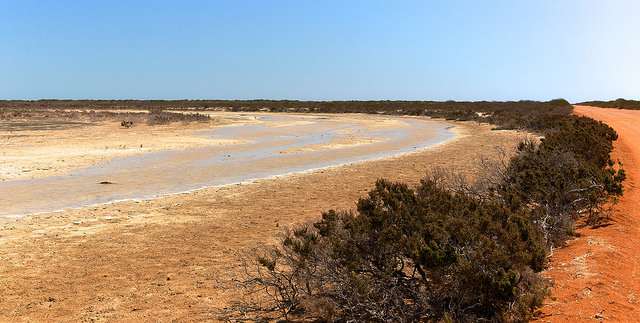Marriage of maths and microalgae a good export

A spatial model developed in WA to identify suitable locations for farming microalgae can be applied internationally and adapted to locate other renewable technology infrastructures, according to developers.
Spatial modelling expert and University of Western Australia researcher Dr Bryan Boruff combined 14 datasets to construct the Australian Algal Cultivation–Spatial Location Model, a model he and colleagues from Murdoch University used to establish that vast tracts of WA land are well suited to large-scale microalgae farming.
The model suggests up to 11 per cent of Australia's annual demand for automotive diesel could be met using bio-oil harvested from WA-grown microalgae.
Dr Boruff's previous work identified large areas of the Wheatbelt as suitable for hosting concentrated solar power facilities with the potential to store and supply renewable energy for power grids across WA.
"We really have a lot of land within the state that could be turned over to renewable energy production, not just algal biofuel production, we have a number of different solar options, plus wave-generated energy and wind-generated energy," Dr Boruff says.
"We already have the world's largest beta-carotene production facility, just north of Carnarvon, so there are examples of the ability to produce on a large scale here."
Sieving through land use options
Dr Boruff's model uses geographical information system (GIS) software to discard those locations that don't possess the qualities required to optimise renewable energy production, a technique called sieve mapping.
"If you're sieving sand or soils to look at particle size, you have a number of different sieve sizes…and you're able to sieve out unwanted coarseness of grains," he says.
"With this model, you're essentially doing that across the landscape, sieving out all the areas that don't meet your criteria."
The end result is a continuous surface, where each 90m by 90m "cell" of land is assigned a numerical suitability value relative to other cells in the dataset.
The researchers studied an area of coastline from Lancelin to Broome and found the region southwest of Karratha to the northeast of Port Hedland was best for microalgae cultivation.
"Obviously the data we've used is specific to the WA context, but the framework we've developed can be very easily applied to other locations," Dr Boruff says.
"You could tweak the model quite easily to add in future climate scenarios…that's where I think the model itself is quite robust."
Dr Boruff says WA's renewable industry must work with the challenges of distance and a small population.
More information: "Identifying locations for large-scale microalgae cultivation in Western Australia: A GIS approach," Applied Energy, Volume 149, 1 July 2015, Pages 379-391, ISSN 0306-2619, dx.doi.org/10.1016/j.apenergy.2015.03.089
Provided by Science Network WA




















